Marcio Kogan brings Brazilian design to Vietnam with Caye Sereno
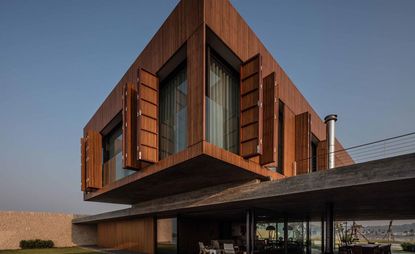
Vietnam is a country on the rise. Since the mid-80s, a comprehensive suite of political and economic reforms has transformed the country from one of the poorest in the world into what the World Bank enthusiastically hails as a development success story. The proof in the pudding is the gold rush of building projects. Admittedly, the majority is targeted at the foreign spend but that is not to discount the growing corps of middle-to upper-income group whose aspirational goals are on track to turn this region into the coming decade's new China.
Headlining the latest crop of high-profile residential developments is Caye Sereno. Its location in the UNESCO Heritage-listed Halong Bay is flawless with every one of the 18 three to six bedroom-villas featuring panoramic views of water and rocky outcropped islands. The Brazilian architect Marcio Kogan imparts his trademark penchant for massive volumes carved out of concrete slabs that somehow seem to float over the landscape while effortlessly erasing the line between interior and exterior.
'Jonathan Cheng, CEO of the property developer Jen Capital, knew some of our projects,' Kogan says. 'He is a great fan of Brazilian music and architecture and felt a great empathy with our work. The design is a response to the unique site. We were very careful on how to set the houses and preserve everyone's amazing views. Working in one of the most beautiful places in the world frightened me at the beginning.'
The results, however, are fearless while incorporating what Kogan describes as 'a sense of extreme gentleness with the entire surrounding area.' Specifically, the interior spaces are framed in locally sourced material. These flow in a seamless sequence as natural stone masonry and moveable glass walls expand and contract rooms to suit the mood and occasion.
Meanwhile, the enormous bedrooms upstairs are cantilevered out over the living room to create a patio - kitted out with an outdoor grill and kitchenette - that's sheltered from the elements but without sacrificing a whiff of sea-breeze. In turn, this segues into a private infinity pool.
The starting price of $3m includes a gym and yoga studio (with views, of course), tennis court and water activities centre, while a 27-hole golf course is in the works.

The property features 18 three to six bedroom-villas offering panoramic views of water and rocky outcropped islands
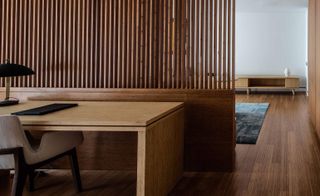
Jonathan Cheng, CEO of the property developer Jen Capital, is an admirer of Brazilian culture, revealed Kogan
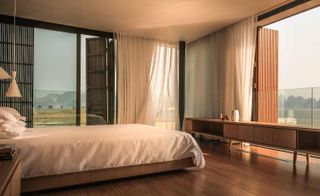
The units’ interior spaces are framed in locally sourced material
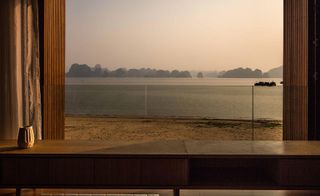
Moveable glass walls expand rooms and open up the interiors to the area’s striking vistas
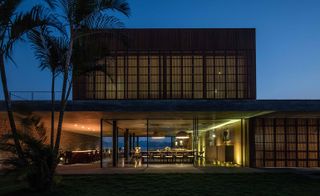
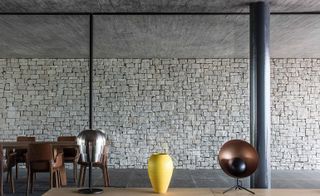
INFORMATION
For more information on Studio MK27 visit the website
Wallpaper* Newsletter
Receive our daily digest of inspiration, escapism and design stories from around the world direct to your inbox
Daven Wu is the Singapore Editor at Wallpaper*. A former corporate lawyer, he has been covering Singapore and the neighbouring South-East Asian region since 1999, writing extensively about architecture, design, and travel for both the magazine and website. He is also the City Editor for the Phaidon Wallpaper* City Guide to Singapore.
-
 Niceworkshop explores the cycle of industrial materials at Milan Design Week
Niceworkshop explores the cycle of industrial materials at Milan Design WeekSeoul-based Niceworkshop caught the design world’s attention with its inaugural collection dedicated to the humble bolt. Now, with its first solo showing at Capsule Plaza, the studio aims to disrupt the life cycle of industrial materials with an exploration into aluminium formwork
By Laura May Todd Published
-
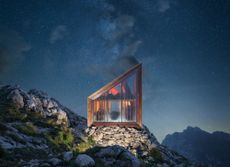 The visual feast of the Sony World Photography Awards 2024 is revealed
The visual feast of the Sony World Photography Awards 2024 is revealedThe Sony World Photography Awards 2024 winners have been revealed – we celebrate the Architecture & Design category’s visual artists
By Ellie Stathaki Published
-
 Don’t Move, Improve 2024: London’s bold, bright and boutique home renovations
Don’t Move, Improve 2024: London’s bold, bright and boutique home renovationsDon’t Move, Improve 2024 reveals its shortlist, with 16 home designs competing for the top spot, to be announced in May
By Ellie Stathaki Published
-
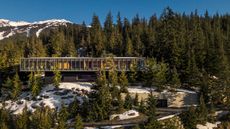 Marcio Kogan’s Studio MK27 celebrated in this new monograph from Rizzoli
Marcio Kogan’s Studio MK27 celebrated in this new monograph from Rizzoli‘The Architecture of Studio MK27. Lights, camera, action’ is a richly illustrated journey through the evolution of this famed Brazilian architecture studio
By Jonathan Bell Published
-
 Brazil’s Casa Subtração contrasts dramatic concrete brutalism with openness
Brazil’s Casa Subtração contrasts dramatic concrete brutalism with opennessCasa Subtração by FGMF is defined by brutalist concrete and sharp angles that contrast with the green Brazilian landscape
By Ellie Stathaki Published
-
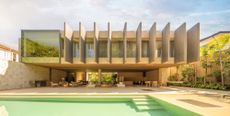 Arthur Casas’ Pacaembu House wins Best Urban Bolthole in Wallpaper* Design Awards 2024
Arthur Casas’ Pacaembu House wins Best Urban Bolthole in Wallpaper* Design Awards 2024Pacaembu House by Arthur Casas is a São Paulo residence that feels like an idyllic escape
By Scott Mitchem Published
-
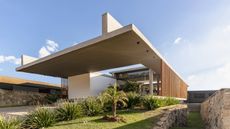 This Brazilian house uses concrete and wood to screen a sleek horizontal living space
This Brazilian house uses concrete and wood to screen a sleek horizontal living spaceThe Brazilian house in Minas Gerais by Tetro Arquitetura is designed to elevate and simplify the art of one-level living
By Jonathan Bell Published
-
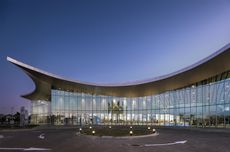 Mario Cucinella's Nice headquarters in Brazil offers a bioclimatic take on industrial architecture
Mario Cucinella's Nice headquarters in Brazil offers a bioclimatic take on industrial architectureComprising a manufacturing base and R&D Centre, the Nice headquarters in Brazil by Mario Cucinella Architects hail a new era for the company
By Ellie Stathaki Published
-
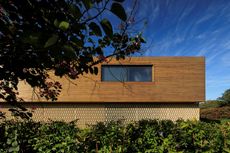 Casa Boa Vista is a Brazilian home that opens up to its natural views
Casa Boa Vista is a Brazilian home that opens up to its natural viewsCasa Boa Vista by Arthur Casas makes the most of transparencies and natural materials to highlight views and nature in Upstate São Paulo
By Ellie Stathaki Published
-
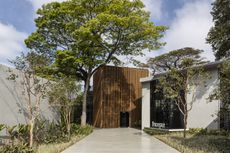 Roca São Paulo Gallery’s architecture is a tribute to the Atlantic Forest
Roca São Paulo Gallery’s architecture is a tribute to the Atlantic ForestRoca São Paulo Gallery designed by architect Fernanda Marques opens in Brazil
By Ellie Stathaki Published
-
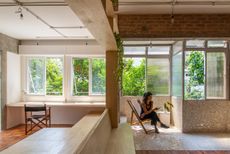 Rúina, Brazil: Wallpaper* Architects’ Directory 2023
Rúina, Brazil: Wallpaper* Architects’ Directory 2023Brazil’s Rúina enters the Wallpaper* Architects’ Directory 2023, our annual round-up of exciting emerging architecture studios
By Nana Ama Owusu-Ansah Published